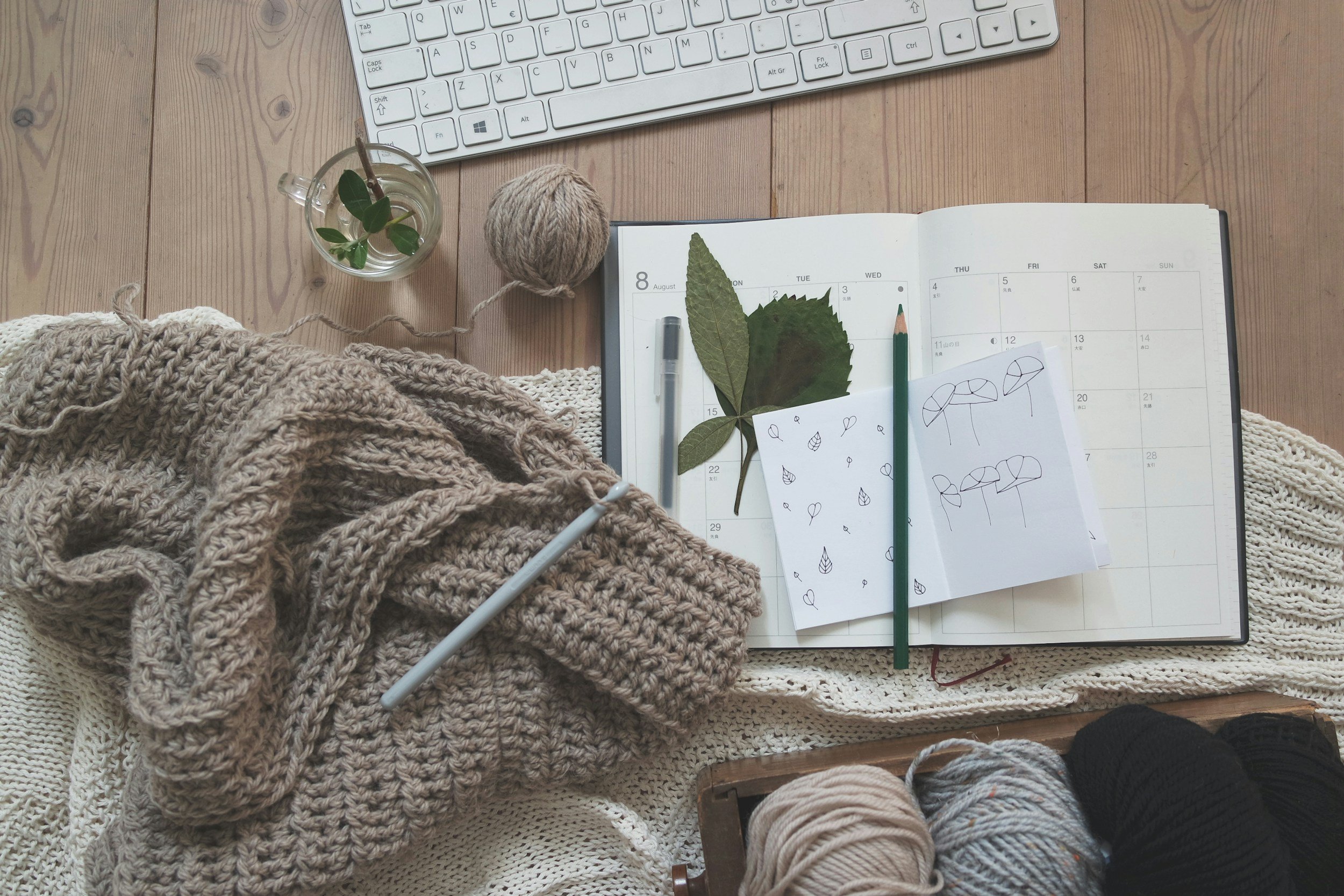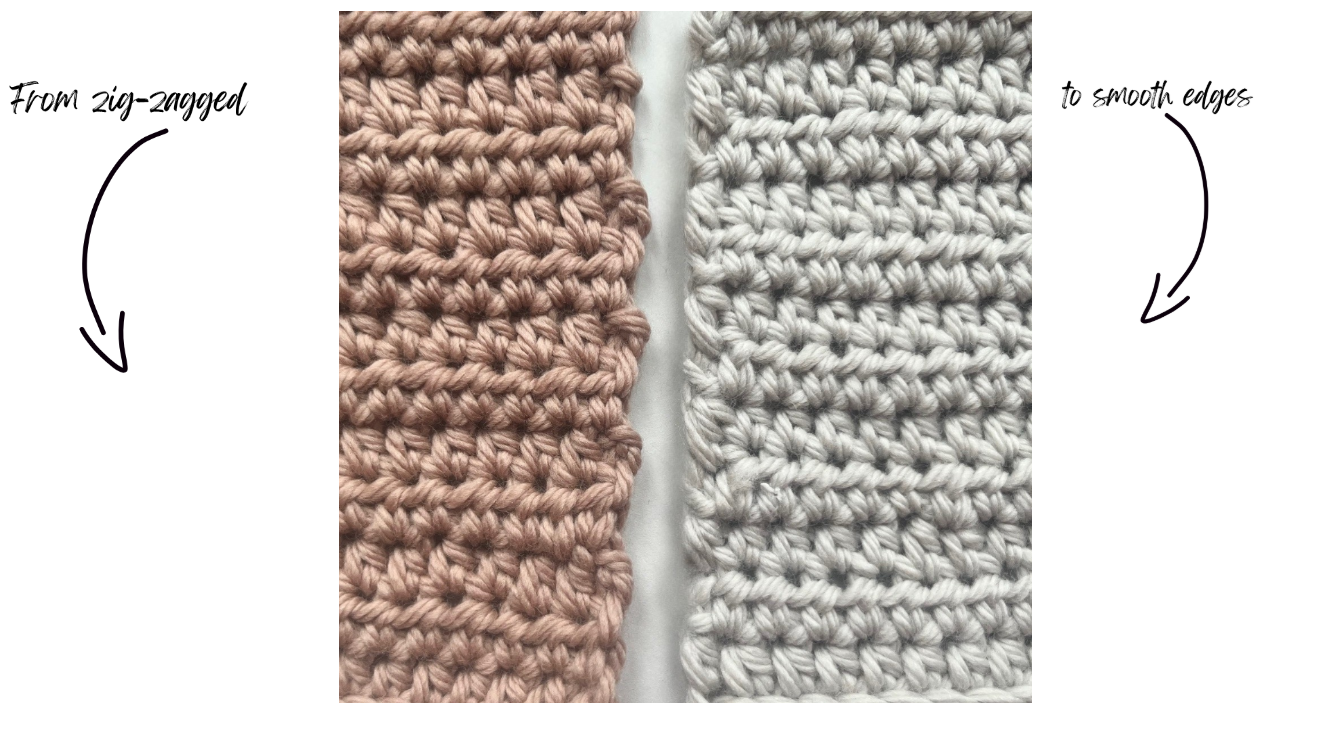5 Crochet Mistakes & How to Avoid Them
This post contains affiliate links. This means I may earn a commission should you chose to sign up for a program or make a purchase using my link.
Did you know that over 45% of new crocheters quit within their first month? I nearly became part of that statistic! After frogging (that's crochet-speak for unravelling) my first project about 12 times, I almost threw my hooks away for good.
But I'm so glad I didn't!
Today, I'm sharing the five biggest mistakes I made as a beginner - and more importantly, how to avoid them.
Whether you're just starting your crochet journey or struggling with the basics, these tips will help you bypass the frustrating learning curve I experienced!
The good stuff
Did you know that learning something new, like crochet, offers remarkable benefits for your mind and fosters a sense of accomplishment?
Dr. Teresa Amabile, a professor at Harvard Business School, found that progress, no matter how small, fuels motivation and happiness.
Each new stitch you learn, each project completed, becomes a tangible reminder of what you can achieve. Creating something with your hands is incredibly empowering.
Crochet isn’t just about yarn and hooks—it’s about giving yourself the gift of growth, mindfulness, and a whole lot of joy.
Let’s dive in and start creating!
New to crochet? This should help: A Beginner's Guide to Crochet: Starting Your Journey to a More Relaxed You
Remember—making mistakes is a natural part of learning any new skill, and every slip-up is a chance to grow and improve.
1. Choosing the Wrong Yarn for Beginners
I used to think all yarns were the same—just pick a pretty colour, right?
One of my first projects was with black yarn because it looked sleek and classy, but I couldn't see my stitches, and I spent more time unravelling than crocheting.
If you're a beginner, go for light-coloured yarns. Medium-weight yarn (often labelled as "worsted weight"). It's thick enough to see your stitches but not too bulky.
Another mistake?
Fancy, textured yarn.
For practice projects, stick to smooth yarns made of wool or cotton. They're forgiving when you need to undo mistakes (which, spoiler alert, will happen). Save the fancy yarn for when you're more confident.
Also, consider how yarn materials affect your crochet experience.
Cotton yarn doesn't stretch much, so it's great for learning tension control, wool or acrylic has more give, which is helpful for beginners. A good budget-friendly option is Red Heart Super Saver or Lion Brand's Basic Stitch yarn—plenty of colors and easy on the wallet.
Buy a skein (ball) of yarn instead of a hank. A hank looks beautiful but needs to be wound into a ball before use—a task that can frustrate even the most patient beginner.
Tip: Preparing your Yarn
If it's a skein, you're good to go. If you bought a hank (those gorgeous, twisted loops of yarn), grab a chair back or a friend to help wind it into a ball before starting.
Make a small "practice swatch" with your yarn before starting your project. This will help you get a feel for the yarn and hook. If it feels slippery or hard to control, switch it up. The right yarn makes a massive difference in your crochet experience!
Store your yarn in a breathable bag or bin to keep it clean and untangled. Tangles are a beginner’s worst nightmare. Keep it neat, and you'll thank yourself later!
2. Crochet Tension Troubles
Tight tension makes crocheting frustrating and leads to uneven stitches. Plus, your project ends up smaller than intended, and frogging becomes a chore.
If this sounds familiar, don’t worry—you’re not alone, and it’s fixable.
One thing that helped me loosen my grip was stepping back and doing simple hand exercises.
Shake your hands out every so often, or even stretch your fingers gently before picking up your hook.
I also started consciously holding my hook and yarn more loosely. It felt weird at first—like I might drop everything—but over time, I noticed my stitches started looking a lot more even.
Understanding how tension affects project size was another game-changer for me.
For example, if your stitches are super tight, that baby blanket you’re working on might come out looking more like a dishcloth.
To fix this, practice crocheting a few rows with relaxed hands to get a feel for the "sweet spot." If you’re struggling, try switching to a larger hook; it naturally loosens up the stitches without you having to overthink it.
Speaking of hooks, different hooks require different grip pressures. Metal hooks, for example, can be a bit slippery, so you might hold on tighter without realizing it.
Ergonomic hooks are more comfortable to hold and help keep the tension consistent without putting strain on your hands. You can get them here.
More on the topic: Understanding Crochet Hook Sizes and Types
Tip: Relax and Enjoy the Process
If you notice yourself gripping too tightly, take a deep breath and put your hook down for a moment. A short break can work wonders for your hands and your mind.
Remember, crochet is supposed to be relaxing, not a battle between you and the yarn!
And don’t forget—you’re not aiming for perfection. Slight variations in tension add character to handmade pieces, so embrace the quirks. Loosen that grip, and let your creativity flow!
3. Skipping the Gauge Swatch (Big Mistake!)
When I first heard about gauge swatches, I thought, Why bother?
A gauge swatch helps you check that your stitches are the right size for the pattern.
Every crocheter has a unique tension, even slight differences can turn your blanket into a placemat.
To make a proper gauge swatch, follow the pattern’s suggested stitch and hook size, and crochet a square that’s at least 4x4 inches/ 10x10 cm. Measure it against the pattern’s gauge instructions and see if you’re on track.
If your swatch is too small, go up a hook size; if it’s too big, go down.
The gauge swatch isn’t just about sizing. It’s also a chance to test the yarn and hook together.
There are occasions when you get away without swatching. If you’re making something where the size doesn’t matter, like a dishcloth or a simple scarf, you can skip it. But for wearable items or anything requiring specific dimensions, just do the swatch.
Tip: Make Swatching Fun!
Think of gauge swatching as a mini warm-up for your project. Use it to experiment with your technique and get a feel for the yarn. If the thought of "wasting time" makes you cringe, turn your swatches into something useful! I’ve stitched mine together to make patchwork coasters or small doll blankets.
Write down your swatch measurements and hook size in a notebook. That way, if you ever use the same yarn again, you’ll already have a head start.
4. Not Counting Stitches Regularly
I can’t even count (ironically) how many projects I’ve frogged because I ended up with too few or too many stitches.
Uneven sides, unexpected bumps, and projects that looked like a Picasso painting instead of a neat rectangle taught me that counting is non-negotiable in crochet.
Use stitch markers, and place them at the beginning of your rows or in every 10th stitch to keep track of your work.
Alternatively, count as you crochet. Then, double-check at the end of the row to make sure everything adds up. You’d be amazed at how quickly this becomes second nature.
But, counting gets tricky if you're distracted by Netflix or a chatty toddler!
Another issue is disappearing stitches.
It usually happens at the edges of rows—either you accidentally crochet into the turning chain or skip it altogether. Or when working with textured stitches; it’s easy to lose track of the pattern.
When this happens, don’t panic.
If you notice a mistake mid-row, pull back to the problem area and fix it.
There are apps and simple row counters available. I’ve also used my phone’s notes app to keep a tally when I didn’t have a pen nearby. These tools make it easier to keep track, especially for larger projects with lots of rows.
Tip: Make Counting Fun (or at Least Easier)
Turn counting into a habit by setting mini-goals, like counting every five rows before taking a quick break. Crochet is forgiving, and a little imperfection is part of what makes handmade items so special.
Treat yourself to colourful or fun-shaped stitch markers. It’s silly, but cute markers always make me more motivated to count! Whether you’re a fan of dinosaurs, flowers, or simple rings, let them add a little joy to your counting process.
5. Trying to Memorize Instead of Reading Stitches
When I first started crocheting, I thought I could just memorize every pattern I came across.
How hard could it be?
Reading your stitches is way more valuable than memorizing patterns.
“Reading” your work means being able to look at your crochet and recognize each stitch by sight.
Start paying attention to how each stitch looks:
A single crochet is tight and compact
A double crochet is taller with a little loop at the top
Knowing stitches makes troubleshooting easier.
Every stitch has three key parts:
The top “V” (where you insert your hook)
The post (the vertical part)
The base (where it connects to the row below).
One of the best ways to practice stitch recognition is to work with simple swatches.
Choose a row of single crochet, then double crochet, and so on. Lay them side by side and study how each one looks. I even took pictures of my swatches at first, so I had a visual cheat sheet to refer to.
More on the topic: Explanations of Crochet Terms for Beginners and Pros
Tip: Make Stitch Reading Your Superpower
Don’t just rely on patterns—use them as guides to teach you how stitches interact. Observe the textures and shapes your hook creates. Over time, you’ll develop a crochet “sixth sense” where you’ll know if something looks off without having to count every stitch.
Try projects with repetitive stitch patterns, like granny squares or simple scarves. They’re great for learning to read your work and spotting mistakes early.
Every crocheter, no matter how skilled, started as a beginner.
Mistakes like choosing the wrong yarn or losing count of stitches aren’t failures—they’re lessons.
So don’t sweat it!
Start with forgiving, beginner-friendly yarn, practice gentle tension, embrace those gauge swatches, keep count, and learn to "read" your stitches like a pro.
Your crochet journey is uniquely yours, and that makes handmade creations so special.
Remember, even the most intricate projects start with a single stitch.
Happy crocheting!
What’s Next?
Pin this post: Save this tutorial to your Pinterest boards so that you can come back to it later.
Leave a comment: We love to hear your feedback. Tell me in the comments below!
Eco-friendly crochet kits for beginners
Easy crochet patterns for beginners





This week’s crochet blanket square is all about simple stitches and beautiful texture. Using an easy two-row repeat, this pattern creates a soft, woven look that’s perfect for beginners and relaxing to stitch. Follow along to add this gorgeous square to your growing blanket — with step-by-step instructions, tips, and a smooth finish every time.